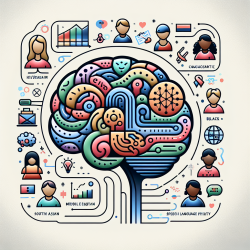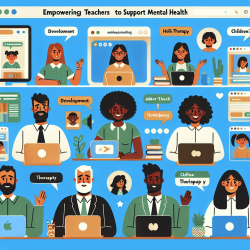In the ever-evolving field of speech-language pathology, the integration of advanced technologies can provide unprecedented insights into the mental health of children, especially those facing unique challenges such as migrant children. A recent study titled Research on Mental Health Monitoring Scheme of Migrant Children Based on Convolutional Neural Network Based on Deep Learning sheds light on innovative methods that can be harnessed to improve mental health monitoring and intervention strategies.
Understanding the Study
The research focuses on using a convolutional neural network (CNN) to analyze various data sources to identify mental health issues in migrant children. The study utilized multisource data, including consumption data, access control data, network logs, and grade data, to train a 1D-CNN model. The model aimed to detect patterns indicative of mental health problems by calculating abnormal scores based on the students' behavior and dietary habits.
Key Findings
The experimental results demonstrated significant potential, with the model achieving a precision of 0.68, recall of 0.56, and an F1-measure of 0.67. These metrics indicate a promising direction for the application of deep learning in mental health monitoring.
Implementing the Findings in Practice
As a practitioner, you can leverage these findings to enhance your approach to mental health monitoring in schools. Here are some practical steps:
- Data Collection: Begin by gathering multisource data from students, such as cafeteria consumption records, network logs, and academic performance data. Ensure that you have the necessary permissions and that data privacy regulations are adhered to.
- Feature Extraction: Use tools to preprocess and extract relevant features from the collected data. This step is crucial to ensure that the input to the CNN model is clean and meaningful.
- Model Training: Train a CNN model using the extracted features. Utilize available software frameworks such as TensorFlow or Keras to build and train your model.
- Monitoring and Intervention: Implement the trained model in your monitoring system to identify students who may be at risk. Develop intervention strategies based on the model's findings, collaborating with mental health professionals as needed.
Encouraging Further Research
While the study provides a solid foundation, further research is necessary to refine and validate the model. Consider collaborating with academic institutions or research organizations to explore the following areas:
- Data Diversity: Expand the dataset to include more diverse student populations to improve the model's generalizability.
- Model Optimization: Experiment with different deep learning architectures and hyperparameters to enhance model performance.
- Real-Time Monitoring: Develop real-time monitoring systems that can provide immediate feedback and intervention.
By staying informed about the latest research and continuously improving your methods, you can make a significant impact on the mental health and well-being of children in your care.
To read the original research paper, please follow this link: Research on Mental Health Monitoring Scheme of Migrant Children Based on Convolutional Neural Network Based on Deep Learning.










